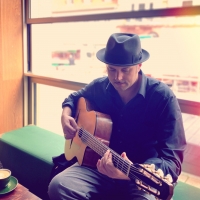DjangoBooks.com
Welcome to our Community!
Categories
- 20K All Categories
- 1.1K General
- 477 Welcome
- 59 Archtop Eddy's Corner
- 146 CD, DVD, and Concert Reviews
- 385 FAQ
- 26 Gypsy Jazz Italia
- 27 Photos
- 202 Gypsy Picking
- 21 Unaccompanied Django
- 15 Pearl Django Play-Along Vol.1
- 17 Gypsy Fire
- 45 Gypsy Rhythm
- 1.4K Gypsy Jazz University - Get Educated
- 131 Gypsy Jazz 101
- 227 Repertoire
- 219 History
- 708 Technique
- 51 Licks and Patterns
- 6 Daniel Givone Manouche Guitare Method Users Group
- 20 Eddie Lang Club
- 1.3K Gypsy Jazz Gear
- 802 Guitars, Strings, Picks, Amps, Pickups and Other Accessories
- 460 Classifieds
- 49 Recording
- 62 Other Instruments
- 18 Violin
- 5 Mandolin
- 22 Accordion
- 7 Bass
- 10 Woodwinds
- 348 Gypsy Jazz Events
- 143 North America
- 110 Europe
- 95 International






















Comments
Even if the tunings are different, the strings are the same on the mandolin, just in reverse order (and missing two strings). And as far as the banjo goes, pretty much the same except the only odd string would be the c string...
I dont care for positions of dots, i think we shouldnt rey too much on them... My friend tcha limberger for instance cannot play on 10th fret dot guitars and i always tel him not to rely on visual aids.....
The only dots are care for are after the 15th fret because guitars are inconsistent in that respect, some guitars have more frets, others less, and it can be confusing playing a nee instrument and wanting to do harp harmonica but getting lost because there are less or more frets than the guitar that i m used to...
Anyway... Play nice fellas, michael bauer is the sweetest dude ever
www.denischang.com
www.dc-musicschool.com
And as far as the rationale behind the 10th fret marker, we have overlooked one possibility. The guys in the Selmer shop were, after all, French. Maybe they just decided to be ornery. "Hey, you American guitar people with your silly 9th fret markers - we fart in your general direction!"
"It's a great feeling to be dealing with material which is better than yourself, that you know you can never live up to."
-- Orson Welles
I am unconvinced of any reason for dot placement with the possible exception of (as was put out there by another poster in this thread) harmonic location. Perhaps the 10th fret marker aligns with harmonics on a mandolin or banjo? The chord shapes on a guitar are different than the chord shapes on a mandolin or banjo, so using the fret markers as a guide with the different tunings is a recipe for confusion.
It is true that many banjo players switched to the guitar and while in theory, using Banjo markers on the guitar (as Klatuu suggested) might help in their transition, that would only be so if they tuned their guitars in 5ths (some banjo players did do this, and conversely, Guitarist Tommy Tedesco tuned his banjo and mandolin in 4ths for studio work on those instruments).
Let's call a spade a spade here, using dots to find your way around the guitar is a crutch, kind of like needing the music stand and a real book to play a tune on a gig. I am just fine on a guitar with a 9th fret marker, a 10th fret marker or no markers at all. And I never bring a music stand to my gigs.
Personally, I find the American marker system more appealing visually, but after 47 years of playing the guitar, it is what I am used to. I do not know what possessed the Franco-Italian luthiers in France to go with their system. Italian luthiers had been building mandolins for centuries, and perhaps the 10th fret dot was more visually appealing to them.
If someone else prefers the 10th fret marker for whatever reason, great. Just don't tell me that I should agree. It is like driving on the left or right side of the road, neither is better or worse, but it is problematic when you are used to one, and are in a Country where you have to use the other. Consistency is useful, whether avoiding a car wreck or a train wreck ;-)
Cheers,
Marc
That seems kinda like learning a poem by reading the middle letter of every second word LOL